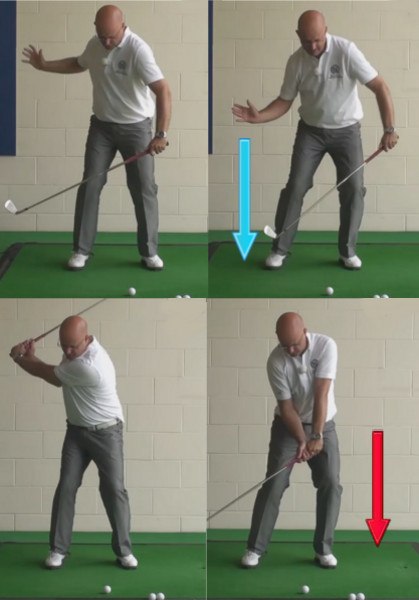
Find out how to generate extra power through the golf ball with this tip.
A downward squat is a reference to the first move made at the start of the downswing. Most golfers turn the shoulders or hips at this point in the swing and attack the golf ball with the upper body. If we look at the golf swings of good golfers or professionals, this does not happen. Instead, we see a movement of the body weight in a lateral, or sideways, motion from the back to the front foot as their first downswing move. Some players not only move laterally but actually squat while the bodyweight moves forwards. A squat is when the hips move sideways into the front foot and the knees bend slightly as the weight not only moves from back to front but also downwards and into the front knee. At this point the golfer will lose approximately two to three inches in height – Tiger Woods and Rory McIlroy are great examples of this.
The point of a ‘squat’ in the golf swing is to gain every ounce of power from the whole body. The squat lengthens the quadriceps (thigh) and set of gluteus muscles (backside) causing what is known as an eccentric contraction which then allows those muscles to contract (shorten) faster and harder. Imagine a person jumping as high as possible. That person would squat down stepping into the jump before exploding up for extra power and momentum. The squat down means that the golfer can then push hard up off the floor with the front leg. As the leg pushes up it straightens and pushes the front hip backwards causing faster rotation in the hips which culminates in a faster turn through the ball. Tiger describes this as a snapping back of the front leg as it straightens.
A few notes on this movement – it is a very powerful movement so any golfers who struggle with injury, flexibility or strength (especially in the knees or hips) should not be trying this movement. Also, the move involves a loss of height in the swing to then explode upward into the ball.
This action can produce inconsistency at first until the timing of the move becomes natural but if this movement is successful then a large amount of distance can be gained for very little effort.






